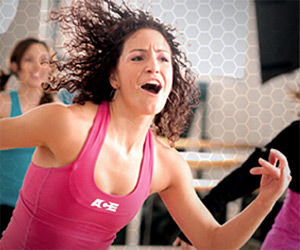
By Carrie Myers
As with any field, the more training and education you receive, the more it will enhance your work. This applies to anyone in the fitness field, even if you work full-time outside the fitness industry, but teach classes on the side. It can be difficult, however, to justify the financial and time investment of pursuing a full group exercise certification when you teach just a class here and there.
“The Group Exercise Leadership specialty certification is designed for those individuals who do not [work full-time in the fitness field] and do not have a primary certification,” explains Anthony Wall M.S., ACE’s director of professional education. “They could be on their way to getting a primary certification, or will ultimately only take single-class workshops designed to teach a specific type of program.”
“Specific types of programs” include specialized classes such as Zumba, TRX and Les Mills’ classes. Individuals getting trained to teach these types of classes are taught how and where to move, says Wall, but won’t necessarily understand why they are doing the movement. That’s where the Group Exercise Leadership specialty certification comes in.
Shelley Mahoney, a certified Les Mills instructor from Vermont, agrees. “Les Mills’ trainings, for instance, are intense and jam-packed into two very long, challenging days. I don’t think they always have the time to explain the ‘why’ of everything and really delve deep into certain moves or spend a lot of time on any one area.”
“We talk about some of the basics of movement and exercise in the Group Exercise Leadership specialty certification,” adds Wall. “Understanding this part of the equation will give an instructor more confidence in dealing with different levels of experience and help them understand how to modify an exercise more effectively.”
This, says Mahoney, is definitely a key to helping her feel more confident in her teaching skills. “I think it would help me most when members ask me how they can modify an exercise. Sometimes I am familiar with modifications for certain moves, or like in BodyStep, they offer ‘light’ options to take out the high impact, but sometimes I honestly don’t know and there isn't a clear answer in my instructor manual. I've had to ask personal trainers at the gym for tips so I could help members in my classes with bad knees or specific shoulder problems modify and still keep coming to class.”
Mahoney specifically cites her lack of exercise science knowledge as a hindrance. “I am confident in my own form and know what I should be demonstrating as far as proper weightlifting technique, but I don't feel that I have enough of an understanding of body mechanics and exercise science to feel very confident in correcting or modifying members’ technique or answering all of their questions.” The ACE Group Leadership Specialty Certificate was created to help professionals such as Mahoney fill the gaps in their knowledge base so they can teach more safely and effectively.
So what is the difference between the ACE Group Fitness Instructor Certification and the specialty certification?

For starters, the Group Fitness Certification is for those who work full-time (or close to it) in the fitness industry or for those who wish to gain a greater understanding of group fitness. It is a more in-depth certification and a third party administers the exam. “The Group Fitness Instructor Certification is one of our four primary certifications,” says Wall. “It is an NCCA-accredited certification, and it is designed to provide you with the knowledge to design, teach and lead classes effectively. In addition to the basics of programming, music choreography, etc., it also covers areas such as injury prevention, our code of ethics, legal responsibilities and the basics on the business aspect of being a group fitness instructor.”
The Group Exercise Leadership specialty certification, on the other hand, is delivered online or live over a total period of eight hours. “The Group Exercise Leadership specialty provides someone who already has a Zumba or Les Mills-type certificate some foundational information,” explains Wall. “It won’t put them on the same knowledge or skill level as a certified instructor, but it will give them some background as to why it’s important to exercise a certain way, or why a good warm-up is essential. It’s basic information compared to what you’d learn in the Group Fitness Instructor certification, and it would give someone some credibility, but they are still not [a full-fledged] ACE-certified Group Fitness Instructor.”
The first part of the Group Exercise Leadership course is taken as a one-day online live workshop. Participants learn teaching techniques, strategies for improved safety and other essential instructional skills to enrich group classes. Also covered: how to safely transition clients back to a total-body program, and how to avoid further injury during phases of tissue healing. The second part of this course is a web lecture that continues to explore these same ideas.
Ideally, everyone teaching group fitness would have the time and money to go through the full Group Fitness Instructor certification. ACE realizes, however, that this isn’t realistic for everyone. The Group Exercise Leadership specialty certification is a great place to start if you want to teach on the side or are just getting started in the fitness industry.
_______________________________________________________________________________
 Carrie Myers has a bachelor’s degree in exercise science and has been a freelance writer for more than 11 years. She is the author of the award-winning book, Squeezing Your Size 14 Self into a Size 6 World: A Real Woman's Guide to Food, Fitness, and Self-Acceptance and presents, teaches and trains in N.H. and Vt.
Carrie Myers has a bachelor’s degree in exercise science and has been a freelance writer for more than 11 years. She is the author of the award-winning book, Squeezing Your Size 14 Self into a Size 6 World: A Real Woman's Guide to Food, Fitness, and Self-Acceptance and presents, teaches and trains in N.H. and Vt.